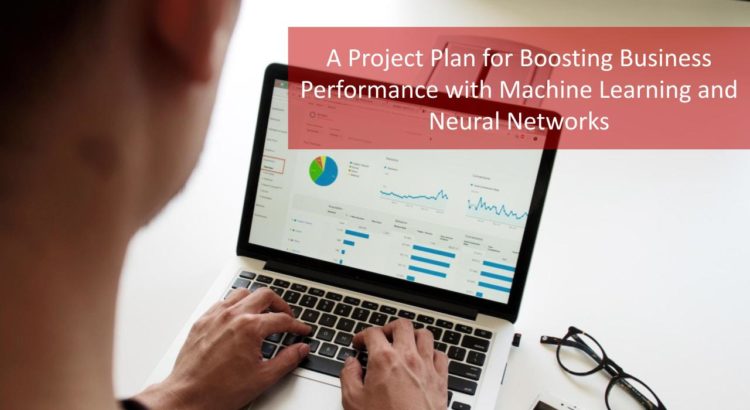In today’s data-driven world, businesses are constantly seeking ways to gain a competitive edge. One of the most effective ways to do so is by leveraging the vast amounts of data at their disposal. Data, when properly collected, cleaned, curated, and integrated with machine learning algorithms and neural networks, can be a game-changer. It can help businesses increase revenue, lower costs, and capture a larger share of the market. In this article, we will discuss a comprehensive project plan for identifying, collecting, cleaning, and curating data to achieve these business objectives.
Phase 1: Identify Data Sources
Before diving into the data collection and analysis process, it’s essential to identify the sources of relevant data. Start by conducting a thorough inventory of all data repositories within your organization. This may include:
- Internal Databases: These contain valuable transactional, customer, and operational data.
- External Data Providers: Consider third-party data sources, such as industry-specific datasets, market trends, and competitor data.
- User-Generated Data: Gather data from customer feedback, surveys, social media, and other user interactions.
- IoT Devices: If applicable, tap into data generated by IoT devices connected to your products or services.
Phase 2: Data Collection and Integration
Once you’ve identified your data sources, the next step is to collect and integrate the data. Ensure that the data collected is of high quality and can be seamlessly merged into a central repository. This step involves:
- Data Collection: Implement data collection mechanisms that align with your identified sources. This may involve setting up data pipelines, APIs, or data scraping tools.
- Data Quality Assurance: Perform data cleaning and validation to remove duplicates, fill missing values, and address data inconsistencies.
- Data Integration: Develop a robust data integration process to combine data from various sources into a unified dataset. Tools like ETL (Extract, Transform, Load) processes can be invaluable here.
Phase 3: Data Cleaning and Preprocessing
Clean, well-organized data is the foundation for any successful machine learning project. In this phase, you’ll:
- Data Cleaning: Identify and address outliers, errors, and anomalies in the dataset. Ensure data consistency and accuracy.
- Feature Engineering: Create new features or transform existing ones to enhance the dataset’s predictive power. This step can significantly impact the performance of machine learning models.
- Data Scaling and Normalization: Standardize the data to have consistent units and scales, which is crucial for many machine learning algorithms.
Phase 4: Data Curation
Data curation involves the creation of a curated dataset that serves as the input for your machine learning and neural network models. In this phase, you will:
- Select Relevant Features: Choose the most relevant features that have a direct impact on the business objectives, thus reducing noise in the data.
- Data Splitting: Divide the curated dataset into training, validation, and test sets to evaluate model performance accurately.
- Labeling: If applicable, label the data for supervised learning tasks.
Phase 5: Implement Machine Learning and Neural Networks
With a clean and curated dataset in hand, you are ready to implement machine learning and neural network models. This involves:
- Model Selection: Choose the appropriate algorithms and architectures based on the nature of the problem (classification, regression, clustering, etc.).
- Training and Validation: Train the selected models on the training data and validate their performance using the validation set.
- Hyperparameter Tuning: Fine-tune model hyperparameters to optimize performance.
Read more about How a PMP Prep Course Can Unlock the Power of Graph Technology
Phase 6: Model Deployment
Once you’ve developed and tested your machine learning and neural network models, it’s time to deploy them into your business operations. This involves:
- Integration: Integrate the models into your existing systems and processes, ensuring seamless data flow.
- Monitoring: Implement monitoring mechanisms to track model performance in real-time and detect any issues promptly.
- Feedback Loop: Continuously collect feedback and update models as new data becomes available to maintain their accuracy and relevance.
Phase 7: Measure and Optimize
To ensure that your project achieves its intended goals of increasing revenue, lowering costs, and capturing more market share, it’s crucial to continuously measure and optimize the results. This includes:
- Key Performance Indicators (KPIs): Define and track KPIs related to revenue, cost reduction, and market share.
- A/B Testing: Conduct A/B tests to assess the impact of the implemented models on different aspects of the business.
- Iterate and Improve: Use the insights gained from data analysis to iterate and improve both the data collection process and the machine learning models.
Conclusion
Implementing a project plan for identifying, collecting, cleaning, and curating data is a strategic move that can transform your business. By integrating machine learning and neural networks into your operations, you can harness the power of data to increase revenue, lower costs, and capture more market share. This comprehensive approach not only drives immediate results but also positions your business for long-term success in an increasingly data-driven world. Remember that data is not just a resource; it’s a competitive advantage waiting to be unlocked.
- If you’d like to have a better understanding of the AI trends and AI technologies you can check out our Introduction to AI and Analytics course to learn how to use AI in project management
